
autosomal recessive hyper-IgE syndrome
Autosomal recessive hyper-IgE syndrome (AR-HIES) is a disorder of the immune system. A hallmark feature of the condition is recurrent infections that are severe and can be life-threatening. Skin infections can be caused by bacteria, viruses, or fungi. These infections cause rashes, blisters, accumulations of pus (abscesses), open sores, and scaling. People with AR-HIES also tend to have frequent bouts of pneumonia and other respiratory tract infections.
Other immune system-related problems in people with AR-HIES include an inflammatory skin disorder called eczema, food or environmental allergies, and asthma. In some affected individuals, the immune system malfunctions and attacks the body's own tissues and organs, causing autoimmune disease. For example, autoimmunity can lead to abnormal destruction of red blood cells (hemolytic anemia) in people with AR-HIES.
AR-HIES is characterized by abnormally high levels of an immune system protein called immunoglobulin E (IgE) in the blood; the levels are more than 10 times higher than normal. IgE normally triggers an immune response against foreign invaders in the body, particularly parasitic worms, and plays a role in allergies. It is unclear why people with AR-HIES have such high levels of this protein. People with AR-HIES also have highly elevated numbers of certain white blood cells called eosinophils (hypereosinophilia). Eosinophils aid in the immune response and are involved in allergic reactions.
Some people with AR-HIES have neurological problems, such as paralysis that affects the face or one side of the body (hemiplegia). Blockage of blood flow in the brain or abnormal bleeding in the brain, both of which can lead to stroke, can also occur in AR-HIES.
People with AR-HIES have a greater-than-average risk of developing cancer, particularly cancers of the blood or skin.


National Institutes of Health
Languages
Pneumonia is an infection in one or both of the lungs. Many germs, such as bacteria, viruses, and fungi, can cause pneumonia. You can also get pneumonia by inhaling a liquid or chemical. People most at risk are older than 65 or younger than 2 years of age, or already have health problems.
Symptoms of pneumonia vary from mild to severe. See your doctor promptly if you
- Have a high fever
- Have shaking chills
- Have a cough with phlegm that doesn't improve or gets worse
- Develop shortness of breath with normal daily activities
- Have chest pain when you breathe or cough
- Feel suddenly worse after a cold or the flu
Your doctor will use your medical history, a physical exam, and lab tests to diagnose pneumonia. Treatment depends on what kind you have. If bacteria are the cause, antibiotics should help. If you have viral pneumonia, your doctor may prescribe an antiviral medicine to treat it.
Preventing pneumonia is always better than treating it. Vaccines are available to prevent pneumococcal pneumonia and the flu. Other preventive measures include washing your hands frequently and not smoking.
NIH: National Heart, Lung, and Blood Institute
- Lung Ultrasound May Be Best to Spot Pneumonia in Kids (04/13/2016, HealthDay)
- Symptoms, Diagnosis and Treatment of Pneumonia (American Lung Association)
- What Are the Signs and Symptoms of Pneumonia?
 (National Heart, Lung, and Blood Institute)
(National Heart, Lung, and Blood Institute)
- How Is Pneumonia Diagnosed?
 (National Heart, Lung, and Blood Institute)
(National Heart, Lung, and Blood Institute)
- How Can Pneumonia Be Prevented?
 (National Heart, Lung, and Blood Institute)
(National Heart, Lung, and Blood Institute) - Pneumonia Can Be Prevented -- Vaccines Can Help (Centers for Disease Control and Prevention)
- Top 9 Ways to Reduce the Risk of Pneumonia If You or a Loved One Is Hospitalized (Association for Professionals in Infection Control and Epidemiology)
- How Is Pneumonia Treated?
 (National Heart, Lung, and Blood Institute)
(National Heart, Lung, and Blood Institute)
- Petroleum Jelly: Safe for a Dry Nose? (Mayo Foundation for Medical Education and Research)
- Bronchiolitis Obliterans with Organizing Pneumonia (BOOP) (Mayo Foundation for Medical Education and Research)
- Frequently Asked Questions about Ventilator-Associated Pneumonia (Centers for Disease Control and Prevention)
- MedlinePlus: Pneumococcal Infections
 (National Library of Medicine)
(National Library of Medicine) - MedlinePlus: Pneumocystis Infections
 (National Library of Medicine)Available in Spanish
(National Library of Medicine)Available in Spanish - Pneumococcal Pneumonia
 (National Institute of Allergy and Infectious Diseases)
(National Institute of Allergy and Infectious Diseases) - What Is Walking Pneumonia? (Mayo Foundation for Medical Education and Research)
- Genetics Home Reference: autosomal recessive hyper-IgE syndrome
 (National Library of Medicine)
(National Library of Medicine)
- FastStats: Pneumonia (National Center for Health Statistics)
- ClinicalTrials.gov: Bronchopneumonia
 (National Institutes of Health)
(National Institutes of Health) - ClinicalTrials.gov: Pneumonia
 (National Institutes of Health)
(National Institutes of Health)
- What Are the Lungs?
 (National Heart, Lung, and Blood Institute)
(National Heart, Lung, and Blood Institute)
- Chlamydia Pneumoniae Infections (American Academy of Pediatrics)
- Mycoplasma pneumoniae Infections (American Academy of Pediatrics)Available in Spanish
- Pneumonia (Nemours Foundation)Available in Spanish
- Pneumonia (For Parents) (Nemours Foundation)Available in Spanish
- Aspiration pneumonia Available in Spanish
- Atypical pneumonia Available in Spanish
- Hospital-acquired pneumonia Available in Spanish
- Mycoplasma pneumonia Available in Spanish
- Pneumonia Available in Spanish
- Pneumonia - adults - discharge Available in Spanish
- Pneumonia - children - discharge Available in Spanish
- Routine sputum culture Available in Spanish
- Viral pneumonia Available in Spanish





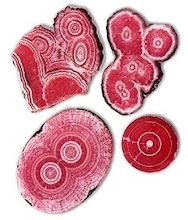
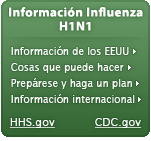

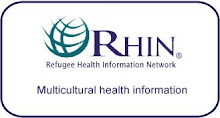




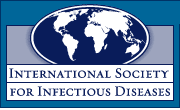




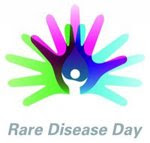
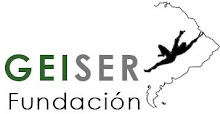














No hay comentarios:
Publicar un comentario